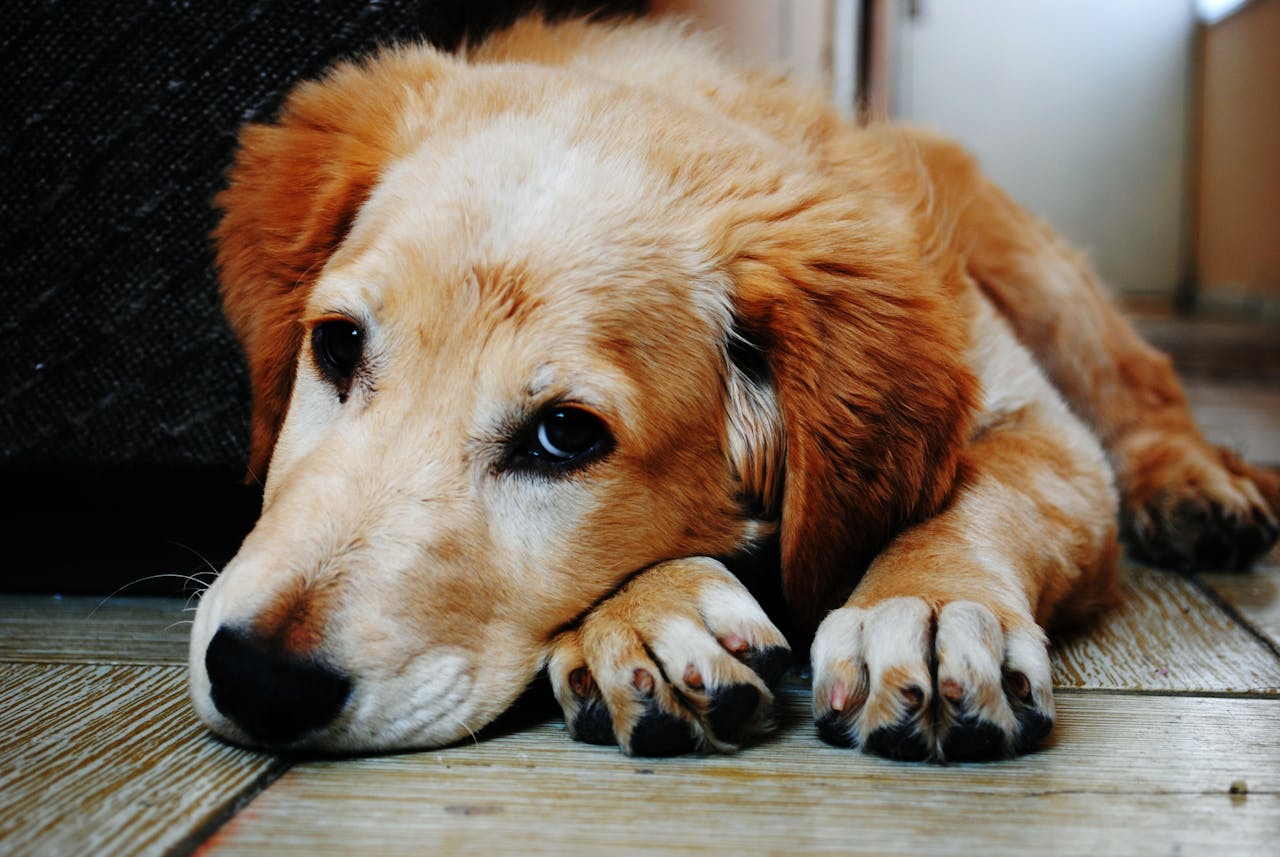most people just accept it as normal. The dog comes over for attention, opens its mouth, and the smell hits. That’s just how dogs are, right? Except it’s not normal, and that smell is often trying to communicate something important about the dog’s health that’s being ignored.
Bad breath in dogs gets dismissed as a cosmetic issue or a minor annoyance. But the odor coming from a dog’s mouth usually indicates actual problems happening inside, from dental disease to infections to health issues that extend beyond just the teeth and gums. Understanding what different smells mean and what causes them helps dog owners recognize when bad breath signals something that needs attention rather than just being an unfortunate characteristic of dog ownership.
When Bad Breath Means Dental Disease
The most common cause of bad breath in dogs is dental disease, which affects the majority of dogs by age three. The smell comes from bacteria accumulating on teeth and gums, producing compounds that create the characteristic odor most people associate with dog breath.
This bacterial buildup starts as plaque, a soft film that forms on teeth after eating. If not removed, plaque hardens into tartar, which provides a rough surface where more bacteria can accumulate. The bacteria don’t just sit there causing smell. They actively attack the gums, creating inflammation and infection that progresses from mild gingivitis to severe periodontal disease.
The progression happens gradually enough that many owners don’t realize how bad things have gotten. The dog’s breath gets worse over time, but the change is slow enough that it seems normal. By the time the smell becomes really noticeable, significant dental disease is usually present. The gums are inflamed, teeth might be loose, and infections are developing in spaces between teeth and gums.
Professional dental care addresses this through proper cleaning that removes tartar and treats existing infections. Services such as dog teeth cleaning perth perform these procedures under anesthesia, which allows thorough cleaning above and below the gum line where home brushing can’t reach. This removes the bacterial source of the odor and treats the disease causing it.
The Smell That Indicates Infection
Bad breath that’s particularly foul or has a different quality than typical dog breath often indicates active infection rather than just bacterial buildup. These infections can be in the mouth itself, in abscessed teeth, or in damaged gum tissue where bacteria have created pockets of infection.
Tooth root abscesses create especially bad odors because they involve dead tissue and active bacterial infection deep in the tooth structure. These abscesses are painful, though dogs often hide the pain until the infection becomes severe. The smell serves as an early warning that something more serious than just dirty teeth is happening.
Oral tumors and masses can also cause bad breath, particularly if they become infected or if tissue dies. These problems won’t improve with teeth cleaning alone and require veterinary examination to identify and treat. The bad breath becomes one of the few obvious signs that something problematic is developing in the dog’s mouth.
Breath That Smells Sweet or Unusual
Not all bad dog breath smells the same, and different odors can indicate different health problems. A sweet or fruity smell to the breath might indicate diabetes, particularly if the dog is also drinking more water than usual or urinating more frequently. This distinctive smell comes from ketones in the breath, a sign that the body isn’t processing glucose properly.
A smell that’s more ammonia or urine-like can indicate kidney problems. When kidneys aren’t filtering waste properly, toxins build up in the bloodstream and can be detected in the breath. This type of bad breath won’t improve with dental care because the source is systemic rather than oral.
These unusual breath odors are the body’s way of signaling internal problems. They get dismissed as just bad dog breath because people assume all dogs smell bad, but these distinctive odors indicate health issues that need veterinary attention beyond dental care.
What Diet and Eating Habits Contribute
Food does affect breath smell, but not usually to the degree that creates the persistent bad breath most dogs with dental disease have. A dog that just ate something smelly will have temporarily bad breath, but this fades relatively quickly. Persistent bad breath that’s present all the time comes from dental issues rather than diet.
Some dogs develop bad breath from eating things they shouldn’t, whether that’s garbage, feces, or dead things they find outside. This creates immediate bad breath but usually isn’t persistent once the offending material is out of the system. If bad breath continues for days after such an incident, something else is likely wrong.
Dogs that eat only soft food tend to develop dental problems faster than those eating dry food, which provides some mechanical cleaning action on teeth. But this doesn’t mean dry food alone prevents dental disease. Most dogs develop dental problems regardless of diet if their teeth aren’t properly maintained.
Why Home Brushing Isn’t Always Enough
Regular tooth brushing helps slow the progression of dental disease in dogs, but it doesn’t reverse existing problems or prevent all dental issues. Many owners start brushing their dog’s teeth after noticing bad breath, hoping it will solve the problem. If dental disease is already present, brushing helps prevent it from getting worse but doesn’t eliminate existing tartar, treat infections, or address the damage already done.
Home brushing also rarely reaches below the gum line, where much of the problematic bacterial accumulation occurs. The visible parts of teeth might look relatively clean while significant disease develops where owners can’t see or reach. This is why dogs can have bad breath despite regular brushing, the source of the odor is in places home care can’t access.
When Bad Breath Means More Than Dental Problems
Bad breath sometimes indicates problems beyond the mouth. Gastrointestinal issues can cause bad breath, particularly if the dog has reflux or digestive problems that bring stomach contents back up the esophagus. Respiratory infections affecting the sinuses or throat can also create bad breath that doesn’t originate from teeth or gums.
These conditions require different treatment than dental disease, which is why persistent bad breath warrants veterinary examination rather than just assuming it’s dental and trying home remedies. The vet can determine whether the smell is coming from oral disease, systemic health issues, or other problems that need specific treatment.
Understanding What the Smell Is Saying
Bad dog breath isn’t normal, and it’s not just a cosmetic issue that owners have to live with. It’s usually the most obvious sign of dental disease that’s causing pain, affecting the dog’s ability to eat comfortably, and potentially leading to more serious health problems if bacteria from the mouth enter the bloodstream and affect organs.
The characteristic smell that people accept as typical dog breath is actually the smell of bacterial infection and tissue inflammation in the mouth. When that smell is present, dental disease is present. The worse the smell, the worse the disease has typically progressed. Other unusual breath odors indicate different health problems that also need attention.
Recognizing that bad breath means something rather than just accepting it as normal helps dog owners identify health problems earlier, when they’re easier and less expensive to treat. That unpleasant smell is the dog’s way of communicating that something’s wrong, even though the dog can’t say it in words. Paying attention to what that smell actually means turns bad breath from an annoying fact of dog ownership into useful health information that helps keep dogs healthier and more comfortable throughout their lives.


